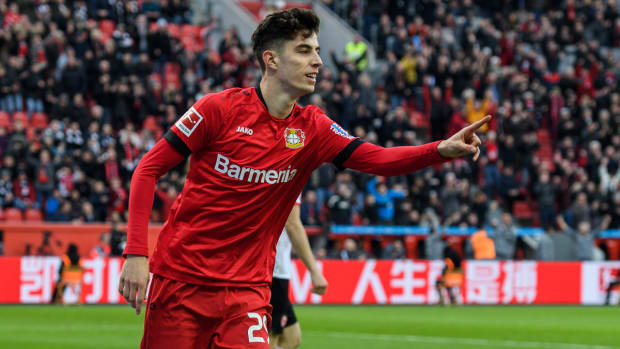Chelsea is going all in when most other clubs are being more cautious with their finances. How are the Blues able to do it, and what does it mean for the season ahead?
Nobody knows when fans will universally be allowed back into stadiums. Nobody knows how the downturn in the advertising market will affect future broadcast rights deals. Nobody knows how bad this economic crisis will be and how many fans will feel they're able to afford television packages or tickets, or how long-term commercial and merchandising revenues may be affected. In a time of uncertainty, with at the very least a short-term hole in their budgets, most football clubs are retrenching.
But not Chelsea.
With the signing of Kai Havertz on Friday from Bayern Leverkusen for an initial reported fee of $105 million, potentially rising to over $120 million, Chelsea has taken its spending this summer to around $300 million on transfer fees alone, while adding a little under $60 million annually to the wage bill. The spending spree has raised questions as to how that can be possible while complying with Financial Fair Play regulations.
All clubs have wiggle room, with a partial suspension of FFP for one season as clubs cope with a sudden shortfall in revenues, so in part it’s that Chelsea has a year to sort its budget out. But as the Swiss Ramble Twitter account has laid out, it has more to do with a lack of transfer activity last season when, because of the transfer ban levied on the club, Chelsea bought only Mateo Kovacic for $50 million (although Christian Pulisic arrived last summer for $73 million, he was signed the previous season and then sent back to Dortmund on loan).

Players remain as assets on a club’s books, their value falling over the term of their contract (amortization). So a $300 million splurge does not come in one hit. Last year, Chelsea sold players, most notably Álvaro Morata and Eden Hazard, for a total of a little over $250 million. As the majority of those players were fully amortized in the accounts, most of that shows as profit. Also, the departure of three high earners in Gary Cahill, Pedro and Willian frees up the wage budget for others.
Chelsea, in other words, should have few problems staying within FFP regulations, although nobody should think these splurges will become a regular feature. This will not be like the early days of the Roman Abramovich regime, back in the wild times before FFP, when vast sums were spent each summer on hordes of new signings. If these signings don’t work out, there will be at least some semblance of consequence.
And that brings a little pressure on Frank Lampard. It may be only his third season as a manager, his second in the Premier League, but with a squad this vibrant there can be no excuses for his inexperience. Last season, when he led Chelsea to fourth and the FA Cup final, was a qualified success with two significant caveats: His side was extremely vulnerable to the counterattack and to set plays.
So while much of the attention has been on the young attacking signings—Havertz, Timo Werner and Hakim Ziyech—more significant in the short term may be how the defenders settle in.
Thiago Silva was signed on a free transfer from Paris Saint-Germain and represents a calculated gamble. He turns 36 later this month, and there is a recent history of players who arrive in the Premier League in their 30s struggling to adapt to the pace and physicality. It’s unlikely that he will be expected to play in every match, but his reading of the game and experience could be of huge value in solidifying the back line. (Malang Sarr, a 21-year-old center back with over 100 appearances in Ligue 1, was signed from Nice on a free transfer, but will be going out on loan.) That should give Chelsea a little more aggression and authority at the back, something Lampard felt his side lacked last season, particularly when defending against corners and wide free kicks.
That Lampard was unimpressed by his options at left back—Marcos Alonso and Emerson Palmieri—was pretty clear. Ben Chilwell, as England’s first-choice left back, is an obvious replacement, and one who offers a similar attacking threat—although rather fewer goals—than Alonso.
This might not be the end of Chelsea’s transfer business, with West Ham and England holding midfielder Declan Rice still seemingly in the club’s sights. He would, perhaps, help the issue of defending against the counter, although Chelsea is not short of high-class midfielders—albeit N’Golo Kanté was not at his best last season. The issue there seemed to be one of organization rather than personnel, which again brings the focus back to Lampard.
Even if a title challenge is unlikely, Chelsea now has a squad that shouldn’t be finishing 30 points behind the champion. These are exciting times at Stamford Bridge—but with expectation comes pressure.